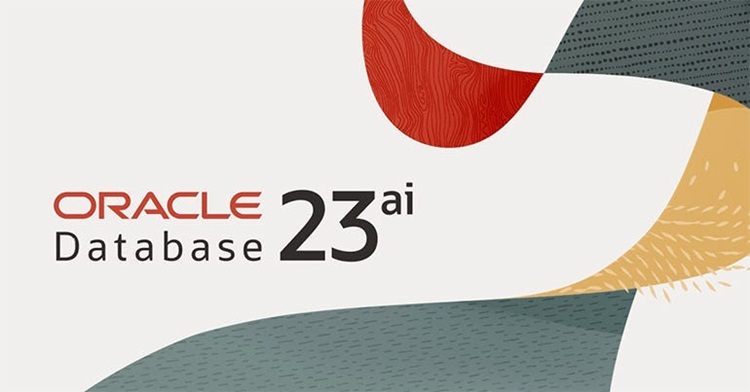We are pleased to announce the general availability of Oracle Exadata Database Service on Exascale Infrastructure. Exadata Database Service provides customers around the world with extreme performance, reliability, availability, and security benefits they depend on for their Oracle Database workloads. With the introduction of highly scalable and affordable Exadata Exascale infrastructure, these benefits are now available in Oracle Cloud Infrastructure (OCI) for any size workload and every Oracle Database customer.
Oracle Exadata Exascale: World’s Only Intelligent Data Architecture for Cloud
Exadata Exascale is Oracle’s revolutionary multitenant architecture that combines the intelligence of Exadata with all the benefits of modern clouds. This loosely-coupled architecture incorporates the Exascale intelligent storage cloud and a pool of Exascale database-optimized compute to provide hyper-elasticity while meeting even the most demanding workload requirements.
Exascale delivers the best of Exadata and the best of cloud
When running Exadata Database Service on Exascale Infrastructure, you have access to its intelligent capabilities across your application portfolio. Database-optimized intelligent infrastructure runs AI, analytics, mission-critical OLTP, and developer workloads faster and more efficiently, reducing overall IT costs. Some of these capabilities include:
• Intelligent AI: The combination of AI Smart Scan with Exadata System Software 24ai offloads key AI Vector Search operations to the Exascale intelligent storage cloud, enabling massive amounts of vector data to be searched up to 30X faster.
• Intelligent analytics: The combination of intelligent columnarization and Smart Scan make hundreds or thousands of processing cores in the Exascale intelligent storage cloud available to process any SQL query.
• Intelligent OLTP: Exascale’s intelligent architecture automatically tiers data between DRAM, flash, and disk enabling low-latency, high-throughput Remote Direct Memory Access (RDMA) to frequently accessed data and delivers the performance of DRAM, the IOPS of flash, and the capacity of disk.
• Database-aware intelligent clones: The Exascale intelligent storage cloud uses redirect-on-write snapshot technology to instantly create space-efficient database clones from read-write sources.
Extreme Performance for Workloads at Any Scale
Until now, Exadata Database Service ran only on dedicated infrastructure allocated to a single tenant. While this approach is instrumental in providing extreme performance for demanding workloads, isolation for every customer, and efficient database consolidation, it requires a higher minimum investment for Exadata adoption.
Starting today, you can enjoy Exadata Database Service benefits at a lower entry cost for smaller, but no less critical, databases. Exadata Database Service on Exascale Infrastructure bridges the gap between dedicated Exadata infrastructure and virtual machines on shared commodity infrastructure. It extends Exadata’s advantages to every organization in every industry, regardless of size or workload.
You can start small using virtual machine (VM) cluster configurations with as little as 8 ECPUs and 22 GB of memory per VM, and 300 GB of intelligent database storage. You can easily scale up the number of ECPUs and number of VMs in the cluster, and then shrink them when you don’t need them. To ensure ECPU capacity is available when you need it, you can reserve ECPUs at a nominal cost.
The same powerful automation available with Exadata Database Service on Dedicated Infrastructure is used to manage the VM cluster and databases, but with the physical compute and storage abstracted from the service. You just deploy the VM cluster and databases without concern for the Oracle-managed infrastructure on which they are running. Your databases are isolated in VM clusters that are fully under your control. VM images are stored on Exascale block storage, eliminating the size limitations of local drives and facilitating migration in the event of a failure.
Benefits of Oracle Exadata Database Service on Exascale Infrastructure
Exadata Database Service benefits are now even more affordable
• Powerful: Exascale infrastructure inherits all the capabilities of Exadata that deliver extreme performance, reliability, availability, and security. AI, analytics, and mission-critical OLTP workloads are accelerated by Exascale’s intelligent data architecture for cloud.
• Extreme low cost: With Exascale infrastructure, you only pay for the compute and storage resources used by your database, starting with a low, highly affordable minimum size. There’s no additional charge for IOPS, making costs predictable.
• Scalable pooled resources: Exascale infrastructure leverages pools of shared intelligent storage and compute, allowing databases to easily scale without concern for downtime, server-based size limitations, or disruptive migrations.
• Agile development: Exascale infrastructure features the ability to create rapid and efficient database thin clones with native Exadata performance that lowers storage costs and enhances developer agility.
Application Modernization with Oracle Database 23ai
Exadata Database Service on Exascale Infrastructure exclusively works with Oracle Database 23ai which not only extends extreme performance to AI Vector Search capabilities, but also includes many developer productivity enhancing features such as JSON Relational Duality that dramatically simplifies building and modernizing your applications.
Key Takeaways
Exadata Database Service on Exascale Infrastructure is a new way for any organization to gain the benefits of using Exadata in OCI. Built on Exadata Exascale, the world’s only intelligent data architecture for cloud, this new deployment option delivers Exadata intelligence with all the benefits of modern clouds.
Exadata Database Service on Exascale Infrastructure extends the performance, reliability, availability, and security benefits of Exadata to workloads at any scale. It provides extremely affordable consumption-based pricing and the elasticity to grow as needed.
Your development and testing teams will enhance their productivity with Exascale’s flexible cloning capabilities. By leveraging Oracle Database 23ai features such as JSON Relational Duality and Exadata capabilities like AI Smart Scan, they will be able to quickly modernize applications and integrate new powerful features.
Source: oracle.com




%20Connections%20without%20a%20Client%20Wallet%20in%20Oracle%20Database%2023ai.jpg)
%20Connections%20without%20a%20Client%20Wallet%20in%20Oracle%20Database%2023ai.jpg)
































